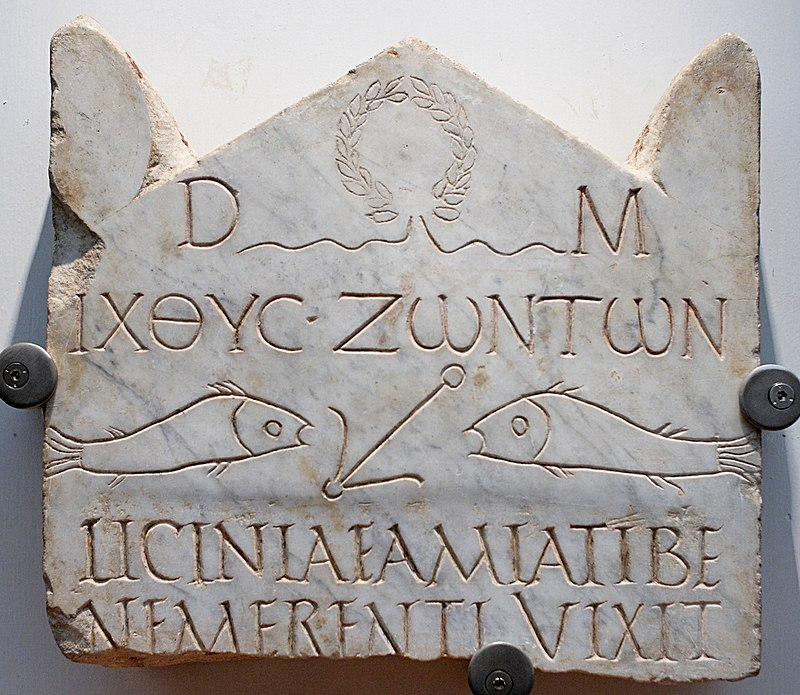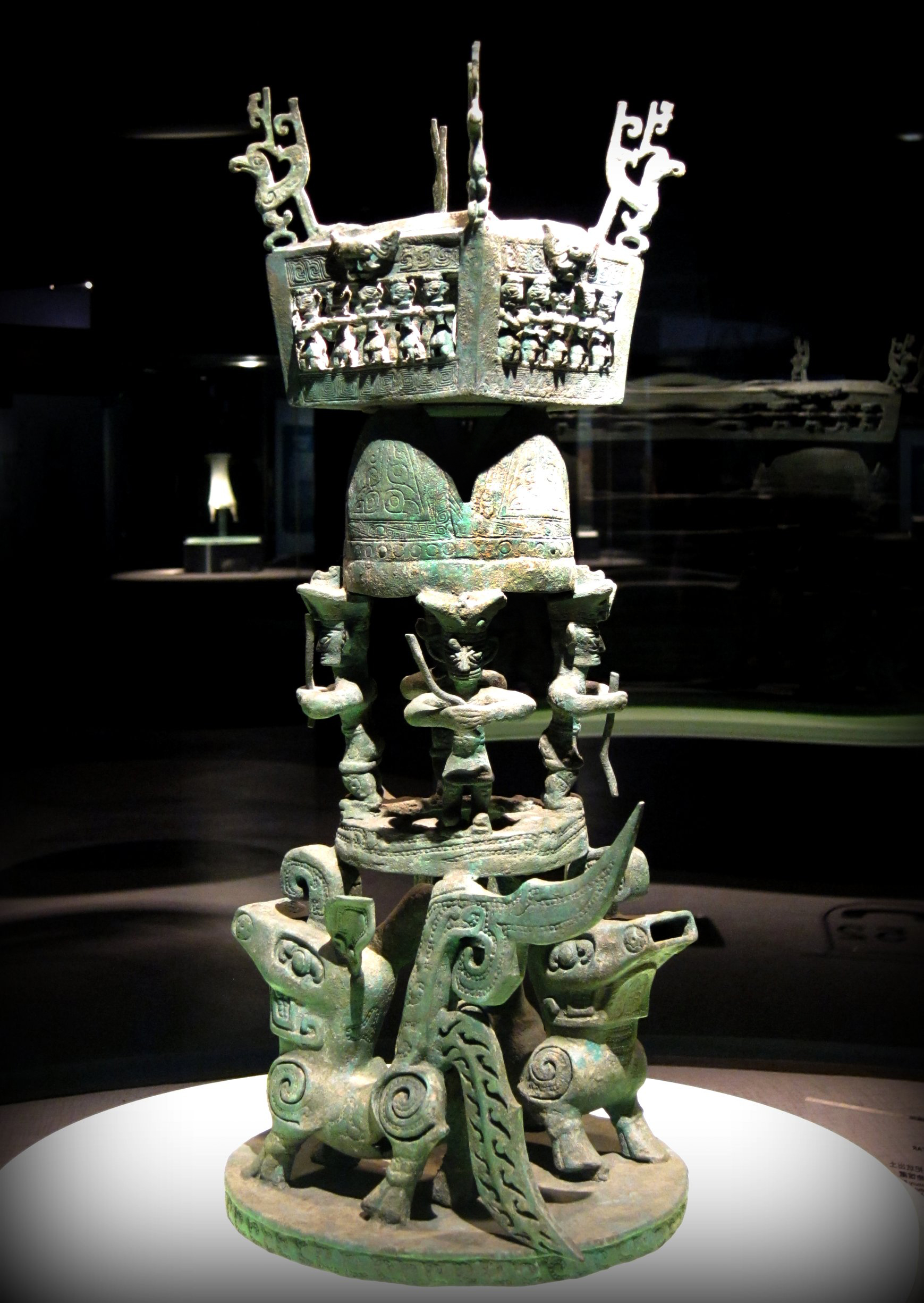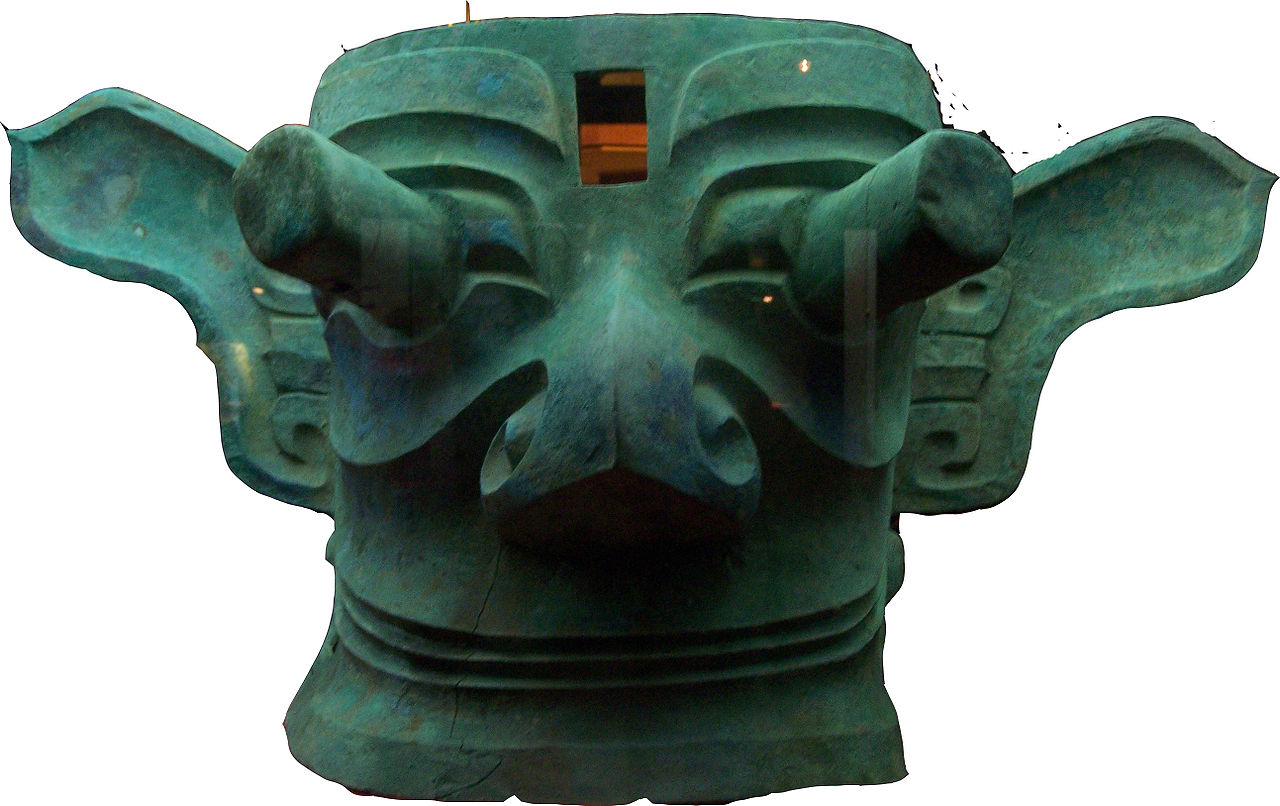Tag: Sacrifice
-

Manes or Di Manes
In ancient Roman religion, the Manes or Di Manes are chthonic deities sometimes thought to represent souls of deceased loved ones. They were associated with the Lares, Lemures, Genii, and Di Penates as deities (di) that pertained to domestic, local, and personal cult. They belonged broadly to the category of di inferi, “those who dwell below,” the undifferentiated collective of divine dead. The Manes were honored during the Parentalia and Feralia in February.…
-

Sanxingdui (‘Three Star Mound’)
Sanxingdui (Chinese: 三星堆; pinyin: Sānxīngduī; lit. ‘Three Star Mound‘) is an archaeological site and a major Bronze Age culture in modern Guanghan, Sichuan, China. Largely discovered in 1986, following a preliminary finding in 1927, archaeologists excavated artifacts that radiocarbon dating placed in the twelfth–eleventh centuries BC. The archaeological site is the type site for the Sanxingdui culture that produced these artifacts, archeologists have identified the locale with the ancient kingdom of Shu. The artifacts are displayed in the Sanxingdui Museum located…
-

Shi (personator)
The shi (Chinese: 尸; pinyin: shī; Wade–Giles: sh’ih; lit. ‘corpse’) was a ceremonial “personator” who represented a dead relative during ancient Chinese ancestral sacrifices. In a shi ceremony, the ancestral spirit supposedly would enter the descendant “corpse” personator, who would eat and drink sacrificial offerings and convey messages from the spirit. James Legge, an early translator of the Chinese classics, described shi personation ceremonies as “grand family reunions where the…
-

Chthonic is a word related to all things underworld
The word chthonic, or chthonian, is derived from the Ancient Greek word χθών, “khthon”, meaning earth or soil. It translates more directly from χθόνιος or “in, under, or beneath the earth” which can be differentiated from Γῆ, or “ge”, which speaks to the living surface of land on the earth. In Greek, chthonic is a descriptive word for things relating to…
-

Pluteus (sculpture)
In architecture and sculpture, a pluteus (plural plutei) is a balustrade made up of massive rectangular slabs of wood, stone or metal, which divides part of a building in half; in a church they fulfil the same function as an iconostasis or rood screen, separating the nave from the chancel. They are decorated with frames in relief or richly decorated with figures or geometric…
-

Iphis Notes
In Greek and Roman mythology, Iphis or Iphys was a child of Telethusa and Ligdus in Crete, born female and raised male, who was later transformed by the goddess Isis into a man. (/ˈaɪfɪs/ EYE-fis, /ˈɪfɪs/ IF-iss; Ancient Greek: Ἶφις Îphis [íi.pʰis], gen. Ἴφιδος Ī́phidos) Mythology According to the Roman poet Ovid‘s Metamorphoses, there was a humbly born, but well-respected, man named Ligdus who lived in Phaestus with his pregnant wife, Telethusa. Ligdus said he wished for two things: that his…
-

Terminus (Roman god)
In Roman religion, Terminus was the god who protected boundary markers; his name was the Latin word for such a marker. Sacrifices were performed to sanctify each boundary stone, and landowners celebrated a festival called the “Terminalia” in Terminus’ honor each year on February 23. The Temple of Jupiter Optimus Maximus on the Capitoline Hill was thought to have been built over a shrine to Terminus, and…
NOTES
- 🧬 Disease Table with Low Sodium Connection
- 🧂 Sodium Reduction and Sodium Replacement: A History of Reformulation and Exploding Diseases, Including Many Diseases Unheard of Before Deadly Sodium Policies
- 🧂 The DEADLY 1500 mg Sodium Recommendation predates the WHO’s formal global sodium reduction push by nearly a decade (and it’s even worse than that)
- 🧬 What Is Beta-Glucuronidase?
- When Sugar Was Salt: Crystalline Confusion and the Covenant of Sweetness
Tags
ADAM ASPARTAME Birds Blood Bones Brain Bugs Cancer Columba Cows crystallography Death Death cults Eggs Etymology Gastrin Gold Growth hormone History Hormones Insulin Liver Mere Perplexity Metal Monkey Business Mythology Paracetamol Plants Poison Pregnancy Protein Religion Reproduction Rocks Salt Slavery Snakes Sodium the birds and the bees Thiocyanate Tobacco Tylenol Underworld Venom zinc

